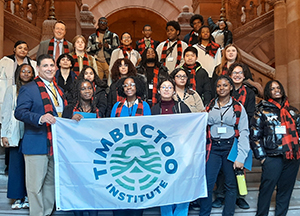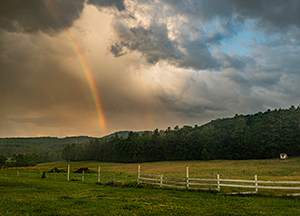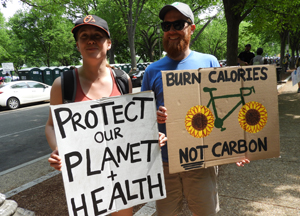
Adirondack Council Marks Great Progress on First 30-Year Plan - Starts New One
New VISION Director Julia Goren and Organization Look Back Before Looking Ahead
ELIZABETHTOWN, N.Y. – As she begins her first weeks as the Adirondack Council’s newest program director, Julia Goren paused today to note the remarkable progress New York has made toward the Adirondack Council’s first long-range plan for the completion of the park, published 30 years ago.
“The Council’s 2020 VISION planning effort was collaborative, science based and successful,” said Goren. “It created an effective blueprint for a better Adirondack Park. The greatest testament to the success of the 2020 VISION, and all who contributed to it, is that more than two-thirds of the lands identified for protection from sub-division and development now have material protection.
“More than two-thirds of the land recommended for protection as biological reserves, motor-free wilderness and non-wilderness lands have been protected. These protections include purchase by the state, conservation easements held by the state, individuals or organizations, and other, less permanent forms of protection,” she said. “Overall, 687,900 acres out of 907,300 acres the Council recommended now have some form of legal protection against fragmentation and development. That’s an impressive accomplishment reflecting positively on the efforts of many agencies, landowners and organizations.”
The Adirondack Park is the largest park in the contiguous United States. It is home to the largest, intact, temperate deciduous forest on earth. It contains 90 percent of the Northeast’s wilderness and ancient, never-harvested forests.
It is important to note that the 126-year-old Adirondack Park remains a work in progress, Goren explained, but it is not likely to become entirely public land.
“There is a persistent misconception that conservationists want the state to buy the whole park and make it all public Forest Preserve,” said Goren. “That just isn’t true. Human communities are an integral part of the unique qualities of the Adirondack Park. The 2020 VISION series is the most detailed and comprehensive land acquisition plan proposed. Yet it called for the park to remain roughly half public and half private. Our job is to ensure that the public and private halves of the park complement and support each other.”
Goren noted that forest protection comes in many forms. State purchase means lands become Forest Preserve. Forest Preserve is public land protected as “forever wild” by New York’s Constitution.
Other lands were protected by conservation easements (contracts that limit development and can provide public recreation), held by government agencies or not-for-profit land conservancies. Still others are subject to long-term land-use plans that prevent subdivision and development.
Goren was hired by the Adirondack Council in September to direct the completion and implementation of its next 30-year plan, known simply as the Adirondack VISION Project.
“Much has changed in conservation sciences since this plan was first created,” Goren said. “There are new threats to the ecological integrity, wild character and communities of the Adirondack Park including Climate Change, air pollution, water pollution, invasive species, overuse and more.
“There was also an assumption in the 1980s that state ownership was the goal for all lands in need of protection. Experience tells us that is not always the best option,” she said. “Many private lands are very well protected. Some public lands are being loved to death.”
The Adirondack Council published 2020 VISION: Fulfilling the Promise of the Adirondack Park, beginning in 1988. It explained how to preserve the park’s rich biological diversity; protect and expand its motor-free wilderness areas; realize the recreational potential of non-wilderness public forests; and, better manage its commercial timberlands and other private properties.
The first three volumes were published beginning in 1988 and focused on the most important land acquisitions needed for completion of the Adirondack Forest Preserve, which comprises almost half of the entire park. It would become the basis for the creation of the NYS Open Space Conservation Plan, which is the state’s landscape preservation blueprint.
Volume 4 was published in 2007. It explained and encouraged the use of conservation easements and other private conservation tools to protect the ecological health and wild character of the park’s private lands.
All four volumes were produced with considerable assistance from state agency staff, private research consultants, university faculty and other advisors. Goren has vast experience in the Adirondacks and expects to gather expert advice as well.
Founded in 1975, the Adirondack Council is a privately funded not-for-profit organization whose mission is to ensure the ecological integrity and wild character of the Adirondack Park. The Council envisions a Park with clean water and clean air, comprised of core wilderness areas, surrounded by farms and working forests, as well as vibrant communities. The Adirondack Council carries out its mission through research, education, advocacy and legal action to ensure the legacy of the Adirondack Park is safeguarded for future generations. Adirondack Council members live in all 50 United States.
For more information:
John Sheehan, Adirondack Council, 518-441-1340 cell
FOR IMMEDIATE RELEASE: Monday, December 3, 2018




